
Publisher:
Bonnie King
CONTACT:
Newsroom@Salem-news.com
Advertising:
Adsales@Salem-news.com

~Truth~
~Justice~
~Peace~
TJP
Dec-22-2012 20:40

 TweetFollow @OregonNews
TweetFollow @OregonNews
Cowardly War Carried Out by Sri Lanka
S. V. Kirubaharan for Salem-News.comSri Lanka persistently maintains that there were only 70,000 people in Vanni when nearly three to four times more people.
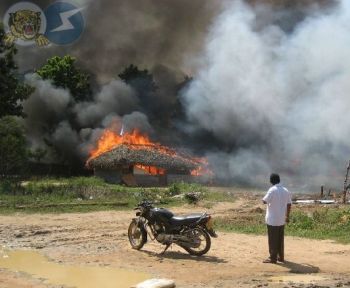 |
(PARIS, France) - The latest reports of the UN Secretary General’s – UNSG, on its work in Sri Lanka tell us many genuine facts which are strongly evidenced.
Those who know the story of the battle between the Singhalese prince Dutugemunu and the Tamil King Ellalan (Elara) will see there is no difference between it and the war that ended on 19 May 2009. In fact, the Sinhalese prince Durutugemenu won his battle against Tamil King Ellalan by cunning and cowardly action.
Nearly 2000 or more years ago, a Sinhala young prince known as Dutugemunu who belonged to the Kingdom of Rukunu in the South of the island, wanted to conquer the land of the Tamils in the Central part, Anuradhapura of the island. So the young prince challenged the seventy years old Tamil King Ellalan for a one to one fight. When Ellalan agreed for the fight, Dutugemunu breached the ancient rules of combat and targeted Ellalan’s war elephant. While Ellalan was falling off his war elephant, Dutugemunu hurled his arrow at Ellalan and won the battle.
The report of the UNSG Internal Review Panel report – action in Sri Lanka published on 14 November 2012, tells us how the Sri Lanka government lied to the international community about the realities of this war and hoe they violated modern day rules of combat. If the rules of combat – international humanitarian law had been respected and if international pressure had been effective and had resulted in meaningful action, the Sri Lankan government would have lost the war long ago.
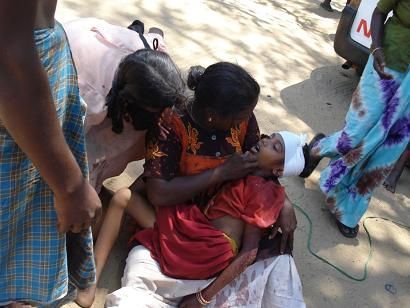
Sri Lanka persistently maintains that there were only 70,000 people in Vanni at the last days of the war. But it has been proved that nearly three to four times more people than that remained there at that time.
To carry out a deadly war without international witness, Sri Lanka asked the UN workers to move away from the conflict areas. No journalist or any NGOs activities were allowed to remain in those areas.
Sri Lanka carried out indiscriminate bombing and shelling everywhere including hospitals and the no-fire zone. Food and medical supplies to those areas were cut off but due to international pressures, small quantities of food and medicine reached the people.
Civilians were malnourished, traumatised, exhausted and often attacked from Land, Sea and Air. These attacks were carried out with arms and ammunition which were not allowed to be used in this conflict.
Civilians were allowed to live in a poor sanitation condition, including no toilet facilities.
Civilians’ bunkers were filled with mud and poisonous insects. Many pregnant women gave birth to their children in them and seriously injured patients were confined in them for days with no medical treatment.
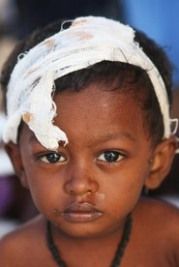
The UNSG Internal Review Panel report, paragraph 33 read as follows:
“33. Throughout the final stages of the conflict, Member States did not hold a single formal meeting on Sri Lanka, whether at the Security Council, the Human Rights Council or the General Assembly. Unable to agree on placing Sri Lanka on its agenda, the Security Council held several ‘informal interactive dialogue’ meetings, for which there were no written records and no formal outcomes. At the meetings, senior Secretariat officials presented prepared statements that focused largely on the humanitarian situation. They did not emphasize the responsibilities of the Government or clearly explain the link between Government and LTTE action and the obstacles to humanitarian assistance. Nor did they give full information on the deaths of civilians. For example, in a 27 February briefing, the USG-Humanitarian Affairs said “dozens of people per day at least are being killed and many more wounded” but did not provide the COG casualty figures or mention that most casualties appeared to be the result of Government fire and were occurring in the NFZ. The Security Council did not issue a press statement until three days before the end of the conflict. At the Human Rights Council, in Geneva, a number of Member States tried over the final weeks of the conflict to gather the minimum of 16 Council members required to support calling a Special Session on the situation in Sri Lanka.” (Excerpt from UNSG Internal Review Panel report)
The report of the UN Secretary General’s Panel of experts on Accountability in Sri Lanka agrees that 40,000 civilian’s death and added that credible information is that over 70,000 civilians were killed.
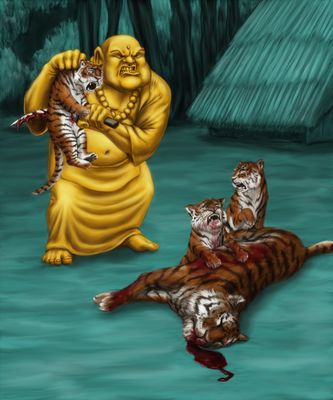
Now the UNSG’s Internal Review Panel report – action in Sri Lanka clear this doubt that nearly 80,000 civilians were killed during the last stages of the war. Paragraph 34 read as follows:
“34. On 19 May, with the death of the LTTE’s leadership, the Government claimed victory in the war. The final phase of the decades-long Sri Lankan conflict was catastrophic. The Panel of Experts stated that “[a] number of credible sources have estimated that there could have been as many as 40,000 civilian deaths”. Some Government sources state the number was well below 10,000. Other sources have referred to credible information indicating that over 70,000 people are unaccounted for.” (Excerpt from UNSG Internal Review Panel report)
The UN Secretary General’s Panel of experts on Accountability in Sri Lanka and also his Internal Review Panel report clearly mention, how Sri Lanka with the help of China, Russia, India, Pakistan and Cuba cunningly used the Special session of the UN Human Rights Council to insert their own resolution which praised their cowardly war tactics.
UN reports also point out how Sri Lanka cheated a few States in the UN Human Rights Council, indicating that the joint communiqué issued by the UN Secretary General and Sri Lankan President included the crucial matter of accountability. In reality, Sri Lanka was not serious or in the least bothered about accountability.
UNSG Internal Review Panel report paragraph 36 reads as follows:
Meanwhile, on 19 May, the same day the war was declared over, at the Human Rights Council a total of 17 Member States belatedly gave their support for a Special Session which was subsequently scheduled for 26 and 27 May. The Sri Lankan Government did not want a Special Session, but once it was scheduled the Government quickly submitted its own draft resolution. By doing so before the Member States who had advocated for the Special Session were themselves able to submit a text, under the procedural rules the Government ensured its own draft was the initial basis for the Council’s deliberations. The Special Session ultimately adopted a slightly adapted version of the Sri Lanka Government draft, which commended the Government for its support to IDPs, welcomed Government commitment to human rights, and urged the international community to cooperate with the Government. The resolution did not mention accountability, although it did endorse the Joint Statement.” (Excerpt from UNSG Internal Review Panel report)
Terrorist and cowardly state
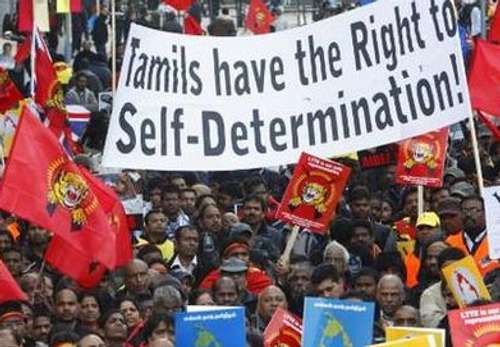
The UNSG Internal Review Panel has used the terminology “internment camp” in their reporting showing how the IDPs were suffering in those camps in Sri Lanka. Furthermore, the report says the following in paragraph 41:
“41. The conflict and its aftermath saw UN staff suffer abuses in contravention of their UN privileges and immunities, and of international human rights and humanitarian law. National UN staff prevented by the LTTE from leaving the Wanni lived through months of Government and LTTE shelling, and witnessed dependents being killed or injured. Staff were screened and interned in camps. At least two staff members were abducted and tortured by Government forces, and then formally detained by the police. Many NGO staff were also killed during the conflict. In March 2012, on UN premises in Geneva, members of the Sri Lanka Government delegation threatened and harassed NGO activists attending the Human Rights Council session.” (Excerpt from UNSG Internal Review Panel report)
What I have mentioned above and many other UN Reports including the reports of the international NGOs endorsed that Sri Lanka has carried out a cowardly war, ignoring the modern day’s rule of combat – international human rights and humanitarian law.
Better late than never, it has come to light that Sri Lanka is not only a Terrorist state, but also a cowardly state.
Two thousand years ago, what Dutugemunu cowardly practiced has been repeated by the modern Dutugemenu(s). Their days in power are numbered
Ps. My recent articles worry a few. Some have warned me too. The common phenomena is that “everyone who comes into this world has to die one day. Until the time comes, it cannot happen. When the times come, no one can escape. Until that, one should not fail in his/her duty.”
S. V. Kirubaharan
 |
 |
 |
Articles for December 21, 2012 | Articles for December 22, 2012 | Articles for December 23, 2012
Quick Links
DINING
Willamette UniversityGoudy Commons Cafe
Dine on the Queen
Willamette Queen Sternwheeler
MUST SEE SALEM
Oregon Capitol ToursCapitol History Gateway
Willamette River Ride
Willamette Queen Sternwheeler
Historic Home Tours:
Deepwood Museum
The Bush House
Gaiety Hollow Garden
AUCTIONS - APPRAISALS
Auction Masters & AppraisalsCONSTRUCTION SERVICES
Roofing and ContractingSheridan, Ore.
ONLINE SHOPPING
Special Occasion DressesAdvertise with Salem-News
Contact:AdSales@Salem-News.com

googlec507860f6901db00.html



Terms of Service | Privacy Policy
All comments and messages are approved by people and self promotional links or unacceptable comments are denied.
[Return to Top]
©2025 Salem-News.com. All opinions expressed in this article are those of the author and do not necessarily reflect those of Salem-News.com.